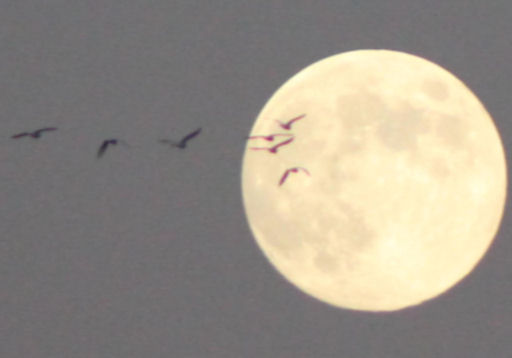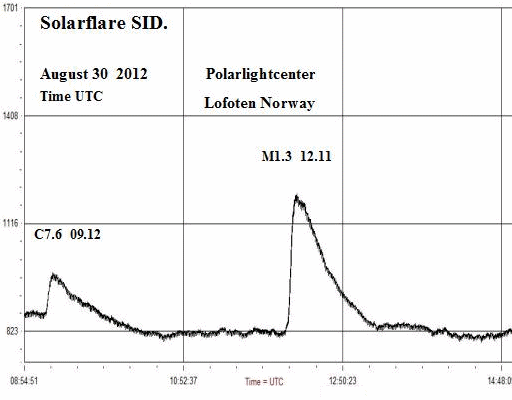Hang the Transit of Venus on your wall! Hubble-quality images from NASA's Solar Dynamics Observatory are now available as metallic posters in the Space Weather Store. | | |
RADIATION BELT STORM PROBES: Most spacecraft try to avoid the Van Allen Belts, two doughnut-shaped regions around Earth filled with "killer electrons." Yesterday, NASA launched two heavily-shielded spacecraft directly into the belts.The Radiation Belt Storm Probes (RBSP) are on a two-year mission to discover the reasn for the belts' dangerous unpredictability. [full story] [video]
BLUE MOON: Tonight's full Moon is the second full Moon this month. According to modern folklore, that makes it a "Blue Moon." Strange but true: Most blue moons look red, pink or gray. On rare occasions, however, the Moon can actually turn blue. A video from NASA explains how.
Richard Sears photographed the waxing full Moon last night from Atwater, California. It was not blue:

For more pictures of the Moon--red, blue, and otherwise--browse the realtime gallery:
Realtime Space Weather Photo Gallery
IONIZATION WAVES: Magnetic fields snaking around the sun's southeastern limb are crackling with C- and M-class solar flares. Extreme UV pulses from the flares are illuminating Earth's upper atmosphere, causing waves of ionization to ripple around the dayside of our planet. Rob Stammes detected the sudden ionospheric disturbances (SIDs) from his laboratory in Lofoton, Norway:

"The extra ionization altered the propagation of very low frequency radio signals around Northern Europe," explains Stammes. "I detected these changes using my 60 kHz SID receiver."
More ionization waves are in the offing. NOAA forecasters estimate a 40% chance of M-class solar flares during the next 24 hours. Solar Flare alerts: text, phone.
Realtime Aurora Photo Gallery
Realtime Noctilucent Cloud Photo Gallery
[previous years: 2003, 2004, 2005, 2006, 2007, 2008, 2009, 2011]
Potentially Hazardous Asteroids (
PHAs) are space rocks larger than approximately 100m that can come closer to Earth than 0.05 AU. None of the known PHAs is on a collision course with our planet, although astronomers are finding
new ones all the time.
On August 31, 2012 there were potentially hazardous asteroids.
Notes: LD means "Lunar Distance." 1 LD = 384,401 km, the distance between Earth and the Moon. 1 LD also equals 0.00256 AU. MAG is the visual magnitude of the asteroid on the date of closest approach. | | The official U.S. government space weather bureau |
| | The first place to look for information about sundogs, pillars, rainbows and related phenomena. |
| | Researchers call it a "Hubble for the sun." SDO is the most advanced solar observatory ever. |
| | 3D views of the sun from NASA's Solar and Terrestrial Relations Observatory |
| | Realtime and archival images of the Sun from SOHO. |
| | from the NOAA Space Environment Center |
| | the underlying science of space weather |

